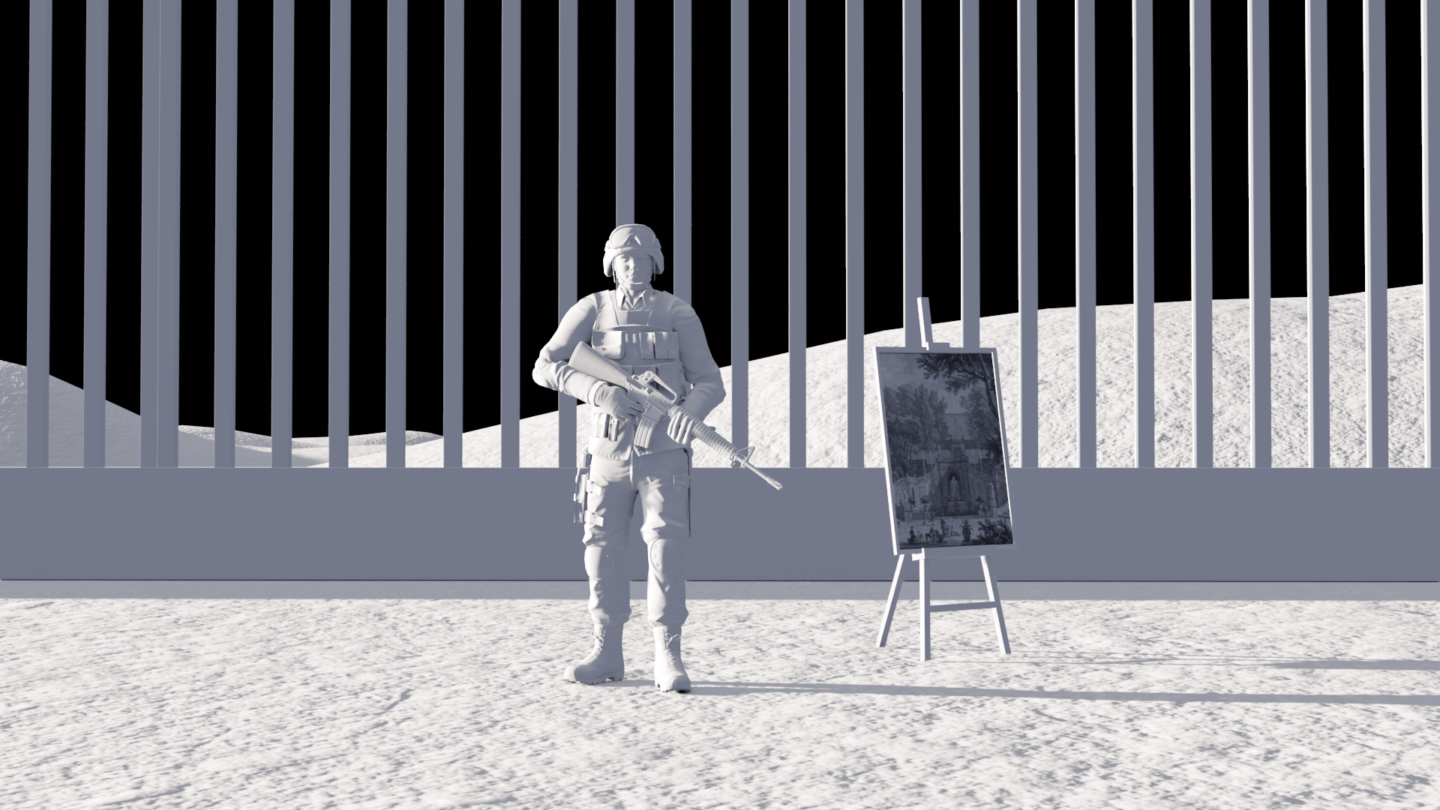A production of Münchner Kammerspiele in a version of Biennale Warszawa.
“The Shire” is the Hobbits’ homeland in J.R.R. Tolkiens “The Lord Of The Rings”. Anduril, the Flame of the West, is the sword Aragorn wields in the battle against evil. In a battle against evil is also where Palmer Luckey seems himself, former CEO of popular VR-headset company Oculus Rift, that is by now one of Facebook’s cornerstones in building the Metaverse. Called Anduril, Palmer’s new start-up founded in 2017, shifts the focus from consumer markets to governmental cooperation developing state-of-the-art, AI-based technology for military and inner security purposes, such as preventing migration at the Mexican-American border.
Following personal overlaps with Palantir, the ideological brother of Anduril, and other unicorn start-ups, cross-connections to the alt-right scene, and a capital flow that spans from Peter Thiel to the Trump Administration, the image of a new tendency in Silicon Valley emerges, one that shows corporate protagonists not being afraid of openly claiming populist and patriotic positions. This tendency is accompanied by a shift of corporate identity-structuring narratives towards pop culture as seen in Anduril’s and Palantir’s repurposing of Lord of the Rings mythology. A repurposing, though, which is not coincidental, perhaps just as much as Richard Wagner’s Ring of the Nibelung’s appeal to the Nazis was not – of which Lord of the Rings could be considered a sort of pop version.
The Shire II tries to approach this tendency, specifically focusing on Anduril’s activity and the implications of its technologies for our understanding of and movement through anthropological and virtual space. How is anthropological space affected by the re-translation of its virtual replica into the real world? Is it a process of augmentation, of overwriting? What does the non-architectural regulation of space mean for a society, when architecture has always been a haptic manifestation of ideology? And what does the technological, financial and historical proximity of liberation promising metaverse-virtual-reality-utopianism and authoritarian alt-tech tendencies tell us?
These are questions The Shire II tackles in a roughly 25 minute long stream of thoughts carried by an assembly of found footage and computer-generated imagery. Introducing the concept of Ghostly Space and referring to the concept of Real Virtuality as developed in the essay collection of the same name by Ulrich Gehmann & Martin Reiche, The Shire II draws a historical lineage from the Italian renaissance garden to the Mexican-American border space. The ghostliness of Anduril’s regulated space is being answered with a filmic ghostliness that lies within figures and voices appearing throughout video, synthetic and partly AI-generated or modified.
The Shire II will build upon the discourse established by its predecessor and expand its analysis of described phenomena through the lens of spatial theory, as well as examine Silicon Valley culture and how the conservative impetus of Anduril and Palantir, which is always an impetus of preserving a status quo, specifically a status of western dominance, deconstructs the common Silicon Valley tropes of innovation, creative destruction and disruption.
Luis August Krawen is a video artist rooted in the context of theatre, opera and performance. He grew up in Berlin where he was a member of P14, the youth group of Volksbühne am Rosa-Luxemburg-Platz, for several years. During his time at the Institute for Applied Theatre Studies in Gießen, he developed a focus on working with 3D animation, which became his main tool for creating experimental films and digital imagery embedded in stage designs.
In the past years, he has worked at major stages of the German theatre landscape in Berlin, Hamburg, Frankfurt, Munich and Zurich. A closer collaboration connects him to Schauspielhaus Zürich and to Münchner Kammerspiele, where he is Artist in Residence since 2020. During this residence he created The Shire, which will be displayed at Biennale Warszawa in a further developed version.
